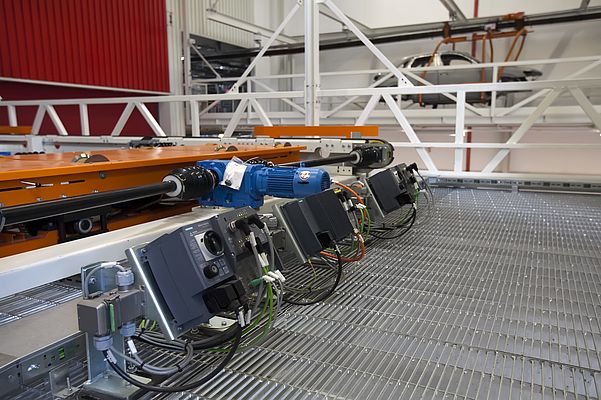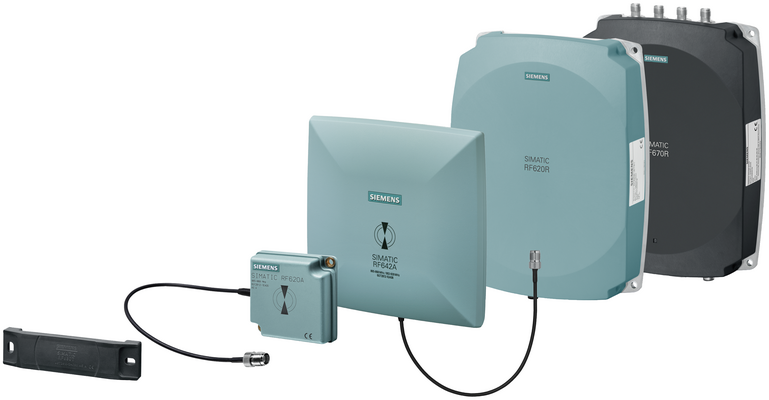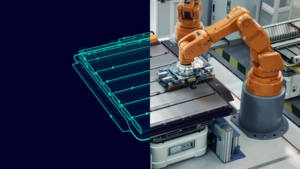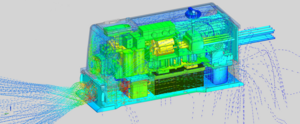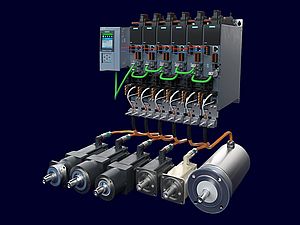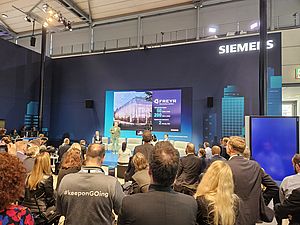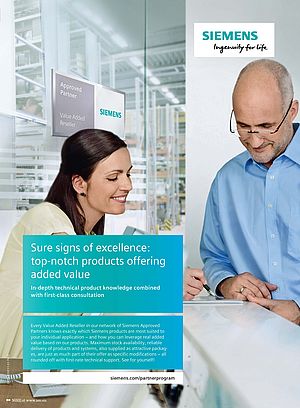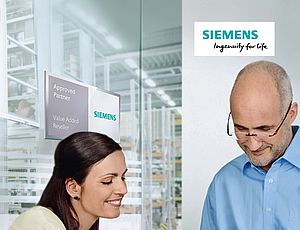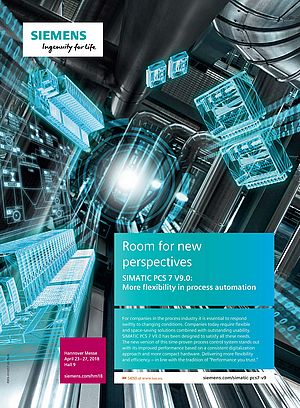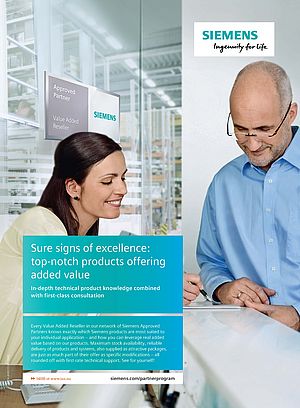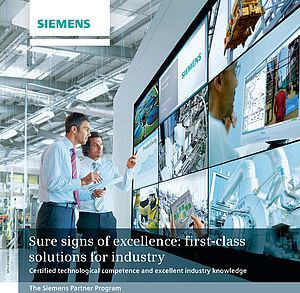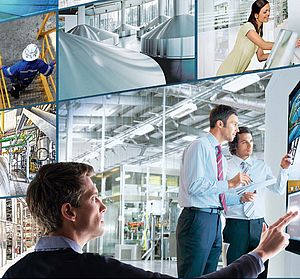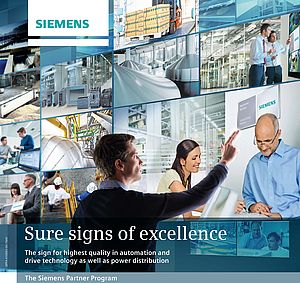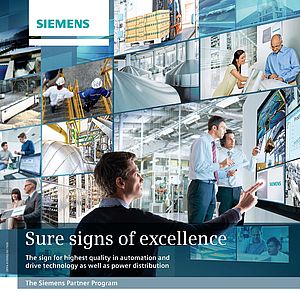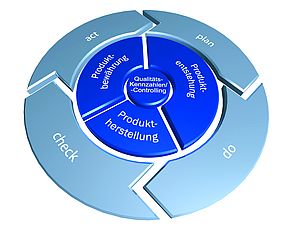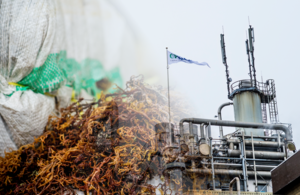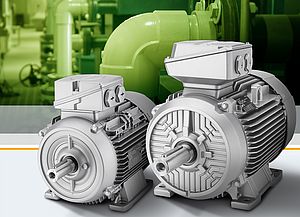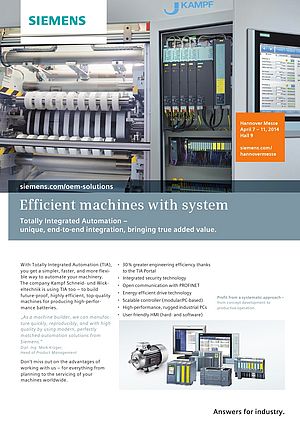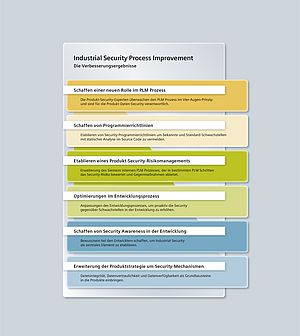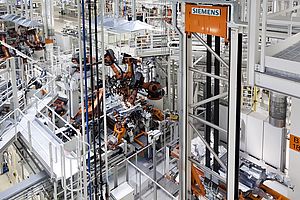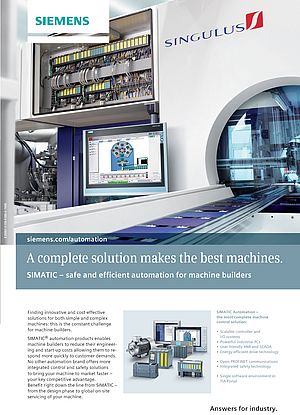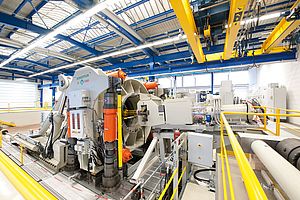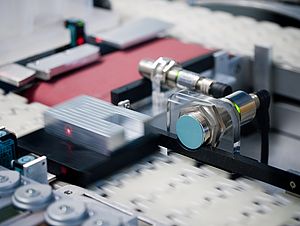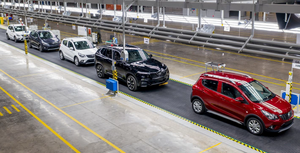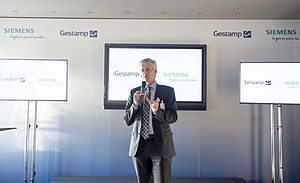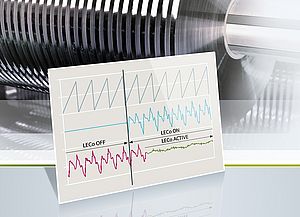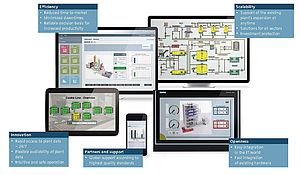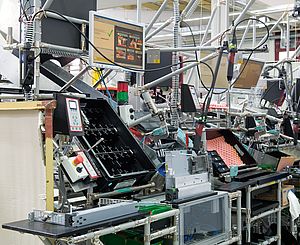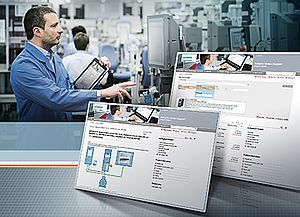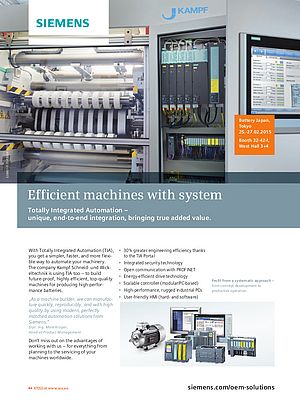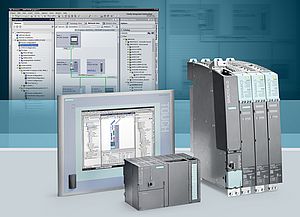Robotized welding of a car body is a demanding job in and of itself. But building different modelsof a particular car in a single plant is a challenge that requires sophisticated logistics and ahighly complex process control system. A large automotive company from Spain has mastered this challenge, relying on a comprehensive solution not only for building the plant itself, but also for ensuring smooth control and communication throughout the entire process.
The small town of Martorell, some 30 kilometers from Barcelona, is the headquarters of car manufacturer Seat, part of the Volkswagen Group. Not only are several hundred thousand cars (377,000 in 2012) built and distributed here annually, it is also the site where future models of the brand are designed and developed.
Production according to Volkswagen standards
In order to achieve a higher level of efficiency and reduce costs in production, the Volkswagen Group introduced a new production concept. The new concept enables various models to be manufactured on the same production line - regardless of vehicle size, model, or drive train - with a higher degree of flexibility. At the Martorell plant, the newLeon is the first Seat model to be produced under this concept.
The automation and drive concept for the conveyor systems of the body shop, where the cars' body shell is manufactured, will also conform with the same high efficiency standard. Seat wanted a solution from a single source, and as a long-standing technology partner, Siemens was able to provide just that. The result was a turnkey solution that includes everything, from mechanical construction all the way to the production control system.
High level of availability
For the new Leon body shop at the Seat Martorell plant, Siemens installed its Simatic CPU 319F-3 PN/DP safety controllers, which communicate via Profinet and support a safe signal transmission via Profisafe. Because the Simatic S7-300 controllers are very fastand efficient, even complex automation tasks can be carried out in real time. At the field level, Simatic ET 200S I/O units are used to communicate with the numerous actors and sensors and link them to the CPUs. Sitop switched-mode power supply units provide 24 V DC power to all interface components.
Throughout the body shop, a ring-type network topology with redundancy manager provides the basis for redundancy, which increases plant availability and reduces the wiring needs. Scalance X-200 managed switches handle uninterrupted data transfer. The devices are characterized by comprehensive diagnostic functionality, for example access via SNMP, web diagnostics, and Profinet. Simatic S7-300 extended diagnostics functions can be used in conjunction with the controllers.
New freedom thanks to Profinet
One major step toward a modern production control system for the Seat body shop was the change to Profinet. As an Ethernet-based communication protocol, Profinet not only provides the basis for extended diagnostics for the communication infrastructure, but also eliminates the need for a separate protocol for all process control functions involving time-critical process data or safety signals.
"With Profinet, we can communicate process information and real-time data overthe same bus," says Mario Alegre, technical manager of the Martorell body shop. "We can even monitor the system down to each field device and diagnose problems right from the control room. This is clearly an advance over anything we had before," he adds. A further major advantage of Profinet is its ability to communicate information over long distances without the need for repeaters.
Safety without extra wiring
A constant flow of heavy car body parts and fast-moving robots characterize the work at the Seat body shop. This calls for extra efforts to prevent injuries and ensure the safe operation of the equipment. Previously, the components of the safety system were connected to the control system via a vast number of safety relays. In the new body shop, however, this challenge is solved with Profisafe, an integrated safety technology based on Profinet or Profibus. The Profisafe technology enables process control information and safety signals to be transmitted via the same bus system. The safety system can be monitored directly via Profinet in order to ensure its proper operation in case a safety critical situation arises.
Putting the puzzle together
An integrated manufacturing process like the one at the Martorell body shop will only work smoothly if the production control system can ensure that the correct parts are joined at the correct time. For this, RFID systems ensure the traceability of different pieces within thelogistics process. A high-frequency (HF) solution (here Moby E) is implemented at the main transport system. In order to carry the basic floor of the car body through the individual processing steps, from one welding position to the next, a skid is used (a platform similar to roller beds). Short-distance HF readers are located close to the transport path. They read the RFID labels on the skid and thus identify the type of body that the respective skid carries. The HF readers are connected to a connection module RF180C, which communicates via Profinet to the respective PLC. The RFID system is designed for the lower performance spectrum but it identifies pieces contactlessly, quickly, and automatically with very high reliability. Compact read/write devices and antennas make it especially suitable for applications in conveyor systems where space is tight.
A similar solution is being realized with RF620R. Along the main transport system, containers are used to manually provide further components of the car body, for example the lateral side pieces. The containers carry an RFID tag that clearly identifies the parts contained. Through this, the individual pieces can be reliably and easily allocated to the corresponding car body. The RF620R readers can read and write the information of an RFID label over a distance of up to several meters. RF180C interfaces are used for the connection to Profinet. In addition to the flexible integration with Profinet, the RF620R system is characterized by the high reading speed. Furthermore, fast-moving tags are reliably detected, even in difficult radio environments or in correlation with another RFID system.
Keeping things moving
For the new Leon body shop, Siemens not only provided the automation and drive solution for the conveyor system but also the complete vertical and horizontal conveyor system itself. This skid-based system follows a strictly modular design made up of individual sections that can easily be joined and re-arranged. Each of the sections features not only a Siemens drive, but also its own Sirius M200D soft motor starter and Sinamics G120/G120D frequency converter, connected directly to Profinet.
"What is beautiful about the Siemens system is the dramatic reduction of wire harnesses," says Julián Carrasco of Seat conveyor technology planning about the solution. "Thanks to the regeneration functionality, Sinamics G120 saves energy and thus minimizes production costs. The soft motor starters convinced the customer through its modular concept, which allows the fast device exchange and their automatic reparameterization. The included media redundancy protocol (MRP) enables configuration of a redundant Profinet ring without any switches and thus saves costs due to fewer additional hardware devices. Each section is simply linked to the Profinet and can be controlled centrally."
IWLAN delivers reliable communication to the warehouse
Vertical and horizontal transport of the skid in the warehouse is accomplished with two elevators that communicate with the control system via a wireless solution, which is also provided by Siemens. Scalance W784-1RR access points are used, together with special antennas. These so-called RCoax radiating cables provide a reliable and secure radio connection throughout the complete transport route. In addition, safety signals will be wirelessly transmitted via Profinet. Because the need for slip rings is eliminated, the wireless solution is maintenance-free and helps to minimize production costs.




